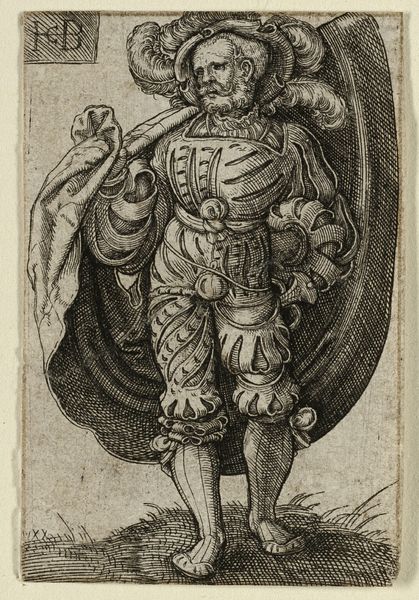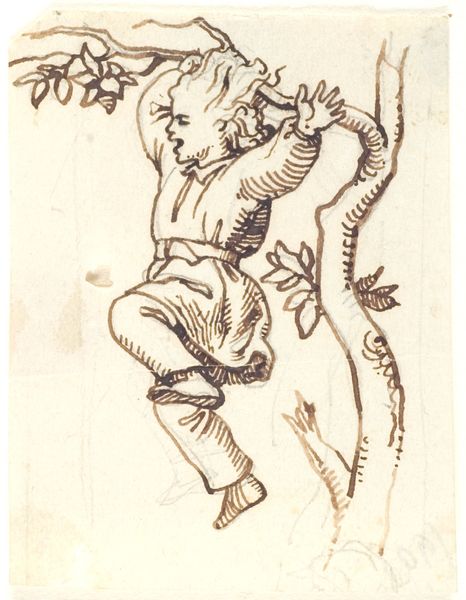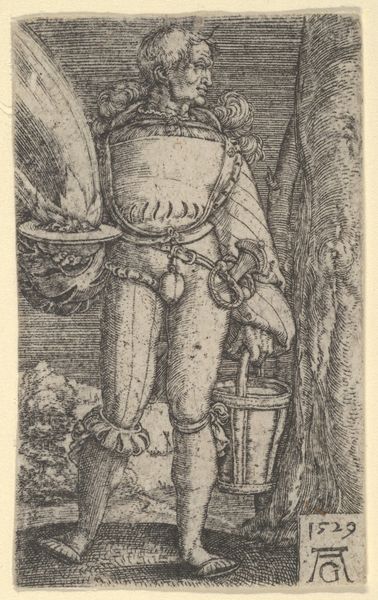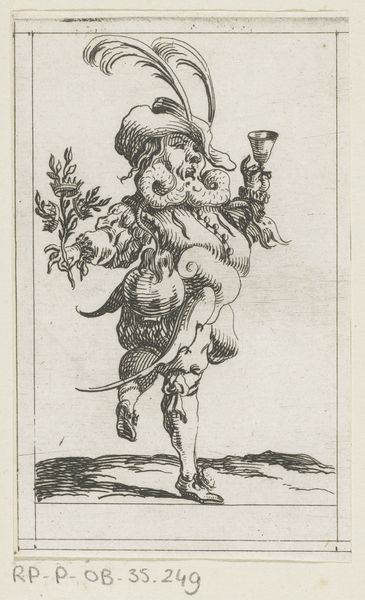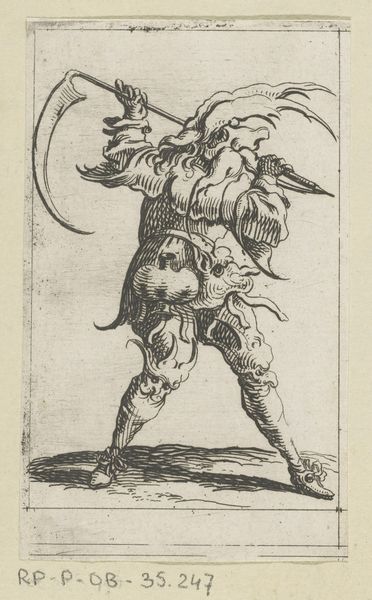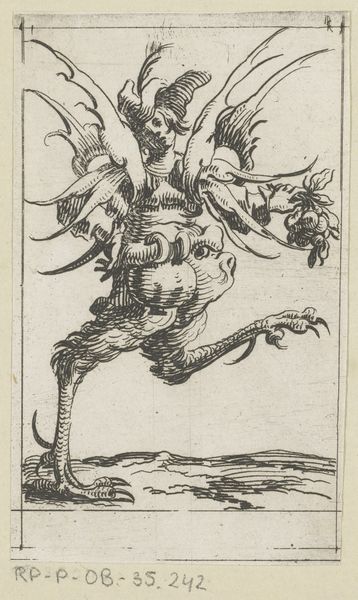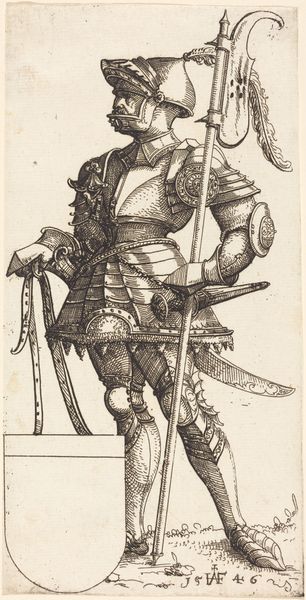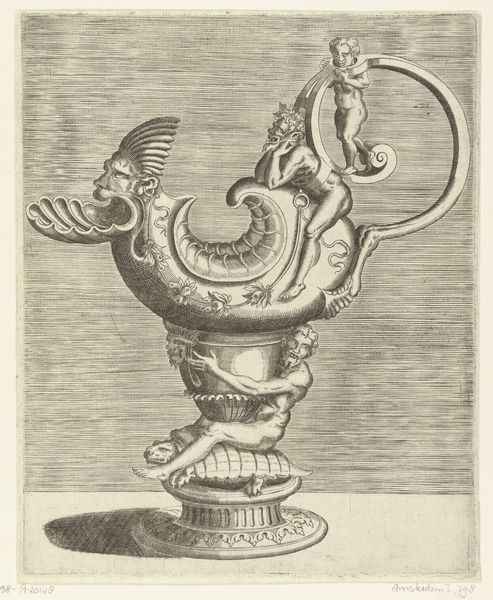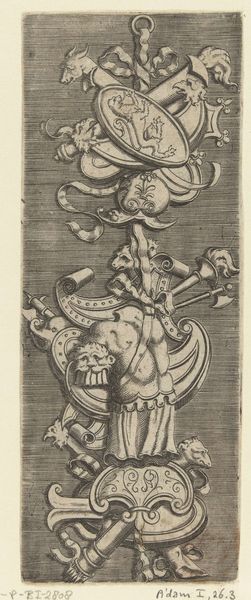
Ornamental Ewer in the Shape of a Female Satyr 1543
0:00
0:00
drawing, print, etching, ink
#
drawing
# print
#
etching
#
figuration
#
11_renaissance
#
ink
Dimensions: 6 7/16 x 3 1/2 in. (16.35 x 8.89 cm) (plate)
Copyright: Public Domain
Curator: Ah, yes, "Ornamental Ewer in the Shape of a Female Satyr" by Augustin Hirschvogel. It’s from 1543. An etching, ink on paper. You can see it here at the Minneapolis Institute of Art. Editor: It looks like a mischievous gargoyle took a pottery class. Seriously though, there's a fascinating tension between the refined ornamental intent and the raw, almost grotesque depiction of the satyr. Curator: It’s certainly a curious piece, isn’t it? Consider its time. The Renaissance was obsessed with classical antiquity but also steeped in folklore. The satyr embodies that tension, a mythical being made functional, elevated into art. Editor: Functional, huh? I’d be a little intimidated drinking from it. That tail snaking around the figure—it looks like it could spring to life any moment. The artist teases our ideas of refinement. Curator: Indeed. Hirschvogel was a master of the Kleinmeister style—small-scale, highly detailed prints popular in Nuremberg. The very act of translating this satyr into a print for wider distribution speaks volumes about the evolving art market and the demand for decorative motifs. Editor: It’s wild how much detail he packed into this tiny thing. I imagine someone in the 16th century flipping through stacks of prints like this, looking for ideas to steal for their own work. Or maybe someone just really wanted a freaky water pitcher. Curator: Exactly! These weren't necessarily precious objects displayed in palaces, but rather sources of inspiration and cultural exchange readily accessible. Editor: It's interesting how the use of line varies. Sharp and precise on the vessel itself but softer on the satyr, giving her more texture. The satyr is an object of decoration but also is rendered as a soft vulnerable being. Curator: Her slightly hunched posture and almost mournful expression contradict the boisterous nature typically associated with satyrs. I'm compelled by this contrast of emotion. Editor: Agreed. Looking at her now, I don't know if I would want this ewer on my sideboard; instead, she provokes real thoughtfulness about hidden longings. Curator: Yes. Ultimately, what was initially a strange drawing now, as a result of our discussion, yields insight on life during the mid-16th century.
Comments
minneapolisinstituteofart almost 2 years ago
⋮
These fantastical vessels, one with a serpent handle (P.68.187) and another with furry legs (P.68.188), hint at the innovations to come from the mind of Augustin Hirschvogel. They were made in 1543, about the time Hirschvogel moved to Vienna after working as a glass painter and cartographer in Nuremberg and present-day Yugoslavia. In Vienna, he used the spontaneity of line exhibited in these ornament prints to create some of the first-ever landscape etchings, helping to establish the genre.
Join the conversation
Join millions of artists and users on Artera today and experience the ultimate creative platform.
